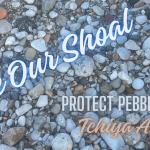Uben Nefer. Welcome to Ancient African Adorations for April 1 on the Neterian Calendar of Holy Days. April 1 is the Day we honor HetHeru the Great Goddess.
Here is the Link for the love broadcast as well as the replay.
HetHeru is the Power of the Life Force Energy, the Sefech Ba Ra, the Aritus, the Kundalini Energy, the Sekhem, etc. The Goddess of Love, Music, Dance, Beauty, & Passion.
Offering Prayer
ONKAO
4 Great Truths
Anpu
http://www.touregypt.net/godsofegypt/hathor.htm
Description: Hathor is a very ancient goddess, dating to predynastic times. When dynastic rule began, as Horus was associated with the king, Hathor was with the queen. Her name translates to “The House of Horus,” and so she is associated with the royal family. But also, as the entire world could be said to be the House of Horus, Hathor can be seen as the mother-goddess of the whole world, similar to Isis.Hathor’s cult is unusual, as both men and women were her priests (most deities had clerics of the same gender as they). Many of them were artisans, musicians, and dancers who turned their talents into creating rituals that were nothing short of works of art. Music and dance were part of the worship of Hathor like no other deity in Egypt. Hathor herself was the incarnation of dance, and stories were told of how Hathor danced before Ra when he was in despair to cheer him up.
www.touregypt.com
“The menit is a ceremonial object associated with the goddess Hathor whose priestesses are commonly shown holding the emblem. Queens and ladies of waiting, when officiating as priestesses also wore or carried it. On rare occasions it was also worn by men, particularly by priests of the Hathor cult, and it could also be worn by the god Khonsu. We believe that, like the sistrum, this elaborate necklace may have actually functioned as a kind of percussion instrument in certain religious contests.

Appearing first in representations of the 6th Dynasty, the menit is associated with Hathor in all subsequent periods of Egyptian history. Even when it was included with other items of tomb equipment as an amulet in the later dynasties of the New Kingdom, it is still associated with the goddess in her role as a deity of the western necropolis and with her part in the rebirth of the deceased. Hence, it was certainly a symbolic item associated with the goddess Hathor, who bore the epithet, “Great Menit”. Many representations of Hathor in her bovine form show the animal wearing the menit around its neck and the necklace is thus sometimes associated with other divine cows. Not surprisingly, the menit is depicted dozens of times in the reliefs of the Late Period temple of Hathor at Dendera.”
http://www.touregypt.net/featurestories/menit.htm


“Two forms of this ceremonial instrument may be distinguished, the oldest of which is probably the naos sistrum (ancient Egyptian ss, ssst). While Hathor’s head was often depicted on the handles of sistrum, an early travertine sistrum inscribed with the name of the 6th Dynasty ruler, Teti, takes the form of a papyrus topped by a naos, which is itself surmounted by a falcon and cobra, thus forming a rebus of the name Hathor (i.e. hwt Hor). Thus, the sistrum known as the naos sistrum dates back to at least the Old Kingdom. It was usually surmounted by twin heads of Hathor upon which a small shrine or naos-shaped box was set. A vulture may crown the naos, and the handle may be covered with the incised plumage of the bird. Rods were passed through the sides of this naos to form the rattle. Carved or affixed spirals framing the sides of the naos represented the horns of the cow-eared goddess. Note that this earliest form of sistrum was often made of faience.
In a funerary context, sistrum could sometimes be included in the tomb equipment, but were frequently non-functional, and made of wood, stone or faience.
The symbolic value of the sistrum far exceeded its musical potential. It is thought that the instrument may have originated in the practice of shaking bundles of papyrus flowers (hence the onomatopoeic name sesheshet) with which Hathor was associated. In fact, the papyrus plant appears to be at the base of the mythology surrounding the sistrum. It is from a papyrus thicket that Hathor is seen to emerge, and it is also in a papyrus thicket where Isis raised her infant son, Horus. Hence, though originally mostly associated with Hathor, the sistrum eventually entered the cults of other deities and especially those of Amun and Isis.
http://www.touregypt.net/featurestories/sistrum.htm
Dua HetHeru Neteritah; Sekima; Nebt tawi; Sat Nesu Ra pg 47 devotion manual
Nuk Pu HetHeru
HetHeru Aha
African religions Vol 4: Asarian Resurrection by Sebai Maa Muata Ashby
vs 4.3-4a pg 70-72
vs 4h: The Myth of Hetheru and Djehuty
The Seven HetHeru Cows pg 77
HetHeru brings Ra out of his depression with a dance. pg 126 vs 144
pieces of Eye of Heru pg 130 vs 163
Substratum of Creation pg 142
Life Force Energy of Ra pg 142
Eye of Ra, Eye of Heru pg 152
7 Mansions, Cows of hetheru pg 156
Perfect Black pg 158
The Power pg 167
Menat 168
Sistrum Sesheshet pg 181
*PMH Sebai Maa Muata Ashby
*Chapter 5: Recognition of Goddess HetHeru as The Power to Live in Righteousness pg 193
1. HetHeru is the day of Amentet. She is also the dweller in Urt, and she is also the Mistress of the exalted, Blessed Land.
2. She is the Eye of Ra and she dwells in his forehead. Which is a beautiful face in the boat of forever
3. she is the seat of peace from which righteousness and truth can be done within the boat of the favored ones, the blessed beings. She makes it possible for the boat of the sun to make its journey in Maati.
*Chapter 5b: The Chapter of being in the Presence of goddess HetHeru Perpetually pg 193
1. These words are spoken to Asar __________________. Behold I am a pure traveler.
2. Behold O Ahi. Let me be among those who follow the goddess Hetheru
Gloss pas 194-195
Representation of Goddess hetheru pg 96-97
Chapter 20: Making a righteous appeal to God for being given sustenance in the Netherworld & Spiritual Enlightenment. pg 243
Egyptian proverbs compiled by Sebai Maa Ashby
pg 107: “I am the Lotus pure coming forth from the god of light, the guardian of the nostril of ra, then guardian of the nostril of HetHeru. I make my journey . I run after him who is Heru. I am the pure ne coming forth from the fields.”
PMH vol 1 Sebai Maa
Painting from tomb of Queen Nefertary pg 87
Dua HetHeru
Medtu dje in Asar
su hemt urt Nefertary
merit Mut Maa Kheru
Adorations to HetHeru. Words spoken by she who is an Asar and First Wife and Queen Nefertary, the beautiful beloved of Goddess Mut, and true of speech (spiritually victorious)
Sacred Beauty Prayer from Sacred Woman, Queen Afua pg 217
Hetheru; Gateway 4 Sacred Beauty:
Behold Creator, may my body temple become a sacred altar, clothed in an array of rainbow colors, reflecting the beauty and the boundless creativity of your light, so that my Body Temple may honor my beautiful spirit.
May divine beauty be anchored in my harmonies thoughts, and may my peaceful attitude and consciousness be reflected in the sacredness of the Beauty of the Creator, so that others may be uplifted by the sacred beauty I emanate in all my ways….
Sailing to Eternity…
Dua Hetheru Neteritaah; Sekema..














There are no reviews yet.